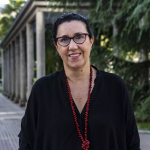Mr. Francisco Palomino, Secretary General of Culture at the Department of Culture, Tourism, Youth, and Sports of the Government of Extremadura, is an experienced professional with over 20 years of experience in the planning, management, coordination, and development of cultural, tourism, and educational projects. His career includes event organization, the creation of tourist products, the production of performing arts and large-scale shows, as well as the implementation of educational, rural development, audiovisual, and publishing projects, both in Spain and in Latin American countries.
Within the framework of the DANCING HISTOR(Y)IES – MODEL DEFINITION project, several interviews have been conducted with prominent local stakeholders. Among them is an exclusive interview with the Secretary General of Culture at the Department of Culture, Tourism, Youth, and Sports of the Government of Extremadura. During this interview, various key questions about community participation in cultural projects were addressed. Below, we present the responses provided by this expert, offering a comprehensive view of the link between performing arts, heritage sites, and community participation. Each response is accompanied by a corresponding video to provide a complete interview experience.
Questions
What does community participation mean to you in the planning and execution of performing arts activities at a heritage site? How can it be achieved?
Each community and each space presents different characteristics, but in general, there are many examples where communities themselves organize to create events/projects, such as the representation of “El Alcalde de Zalamea,” “Whisperers of Verses” from the Alcántara Classical Theater Festival, or the “Reenactment of the Investiture of the Master of Alcántara.”
It is necessary to involve and listen to the associations and groups that make up the territory, so that they feel reflected and are the protagonists of the events and activities that take place. Citizens’ proposals should have a place in the development of cultural activities. If the project aims to endure over time, it is necessary for the local community to participate so that the population feels identified with it.
Based on your experience, what recommendations would you give to improve the participation of the local community in enhancing an archaeological site through performing arts?
Humility is needed; there’s no need to reveal to anyone what they already have in their surroundings, as they are already aware of it. The needs of urban inhabitants are not the same as those of people living in rural areas. And it’s the residents themselves who know their situation better than anyone else.
When carrying out a project, it’s necessary to first listen to the opinions of the local community, and secondly, it’s necessary to explain very well what is intended, why it’s intended, and what is to be achieved with it. Additionally, there are many projects and events, but it’s necessary to focus on the objectives to be achieved.
In what ways can local authorities help attract audiences to heritage sites?
First and foremost, it’s essential to support the growth potential of the spaces. The combination of heritage, cultural events, and tourism is also very important; it’s a mix that generates a lot of value, both economically and in terms of projection to other territories. Models and pilot projects could also be preserved to be tested in the implementation of future cultural proposals.
For a project to move forward, it’s necessary to commit firmly to it, believing in the project and having a clear idea of the identity that is to be conveyed. It also cannot be a copy of something already being done elsewhere. If it’s only applied following a trend, it won’t be as successful, and its future prospects will be limited.
Can dance add significant value to archaeological sites?
Dance is one of the most powerful tools for showcasing heritage because it can adapt to spaces and communicate the feelings associated with those sites. Dance can convey a wealth of unique emotions and sentiments related to each space. The artist values both their creation and the site that accompanies it. In this sense, to understand dance, it’s important to let oneself be carried away, and even if the meaning isn’t fully understood, it’s capable of conveying emotions just the same. An example of this is the ‘Vera Creativa’ program.
What specific skills or knowledge would you like to gain from a training programme focused on combining performing arts, heritage site valorisation, and community engagement?
It’s crucial to empower the local community in theatre and heritage culture and raise awareness about performing arts and heritage conservation. There’s also a lack of cultural management from the administration. Cultural management extends beyond mere activities like workshops; it should be able to harness local resources to generate more culture, whether through administration or various associations. Additionally, there’s a need to promote training in cultural management to professionalise the sector, as there’s a shortage of professionals skilled in handling culture appropriately.


